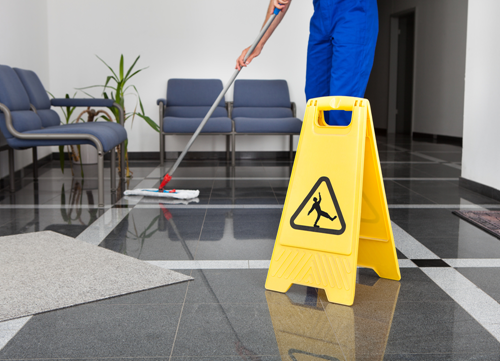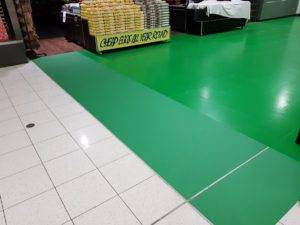
Preventing Slips, Trips and Falls in the Workplace
Originally posted on https://www.cfsols.com.au/news/preventing-slips-trips-falls-workplace/
Slips, trips and falls account for a large percentage of workplace injuries every year. According to WorkSafe WA, slips, trips and falls account for about a quarter of lost time injuries in Western Australian workplaces. Injuries recorded range from minor cuts and bruises to more serious musculoskeletal ones, such as fractures and dislocations. A major contributing factor is the state of the floor in the premises.
Safe Work Australia (SWA) requires that persons conducting a business or undertaking (PCBU) must manage the risks associated with slips, trips and falls and take reasonable steps to eliminate such risks where reasonably practicable or minimise them at the least.
This puts a huge burden on PCBUs in ensuring that business/commercial premises’ floors are safe at all times for all users so that they can prevent lawsuits from customers or staff following slip, trip or fall injuries. It is essential to identify risk factors that lead to slips, trips and falls and conduct risk assessments so that appropriate measures to mitigate such risks can be instituted.
CONTRIBUTING FACTORS
Slips occur when a person’s foot loses traction with the ground surface. If a person unexpectedly catches their foot on an object or surface, it may lead to a trip. Both trips and slips can result in a fall, occasionally with grave consequences, especially if it happens from a height.
The following are common factors contributing to slips, trips and falls:
- Flooring
- Cleaning
- Footwear
- Contaminants
- Human error
- Environmental factors
CONDUCTING A RISK ASSESSMENT
At the heart of any risk assessment should be the identification of hazards in the workplace that may cause trips, slips or fall. Employees can give valuable insights on existing risks by providing information on their personal experiences or what they may have observed around the workplace.
A suitable hazard spotting checklist should be drawn up to assist in identifying such hazards. A walk-through in the work area will usually unveil the existence of these hazards. The presence of any of the following should be noted:
- Floor areas prone to being slippery from rain or other sources of water
- Fire escapes that become slippery when wet
- Areas prone to the possibility of ice build-up during winter months
- Presence of holes. Pot-holes or uneven paving
- Presence of trip hazards such as mats with curled up edges, trailing cables or other objects
- Tiles or flooring that are becoming unstuck or curling at the edges
- Worn-out anti-slip floor coating or grip tape that is worn smooth
- Poor lighting levels or light that is reflecting on smooth flooring creating a glare
- Machine leaks, human spillages or work process fluids that can make the floor slippery
While this checklist is not exhaustive, it should be used in conjunction with a risk mapping tool to help identify high-risk locations in the premises where hazards can put people at risk.
A useful risk mapping tool would be a floor- map of the premises indicating locations where slips, trips or near-misses have been reported in the last 12 months. Locations where incidents have occurred multiple times should be highlighted as prospective ‘hotspots’ and you should talk to personnel to find out what caused people to trip or slip repeatedly in those areas.
PREVENTING INJURIES FROM SLIPS, TRIPS AND FALLS
Steps should be taken to safeguard employees and individuals from hazards identified. Hazards such as trailing cables, pot-holes, uneven floor surfaces, poor lighting and so on should be addressed appropriately. A degreasing agent should be used to break down and remove any grease on the floor before the application of regular cleaning chemicals. This prevents the grease from spreading around and making the floor even more slippery.
Slippery floors can be problematic, particularly in business and commercial premises. The good news is that a revolutionary anti-slip floor film called 3M Anti-Slip floor film is now available to improve safety in such premise.

This new product can be applied to spill-prone floor areas or poorly designed floors where the cost of changing the floor surface is prohibitive. The anti-slip floor film is customisable, and it can be applied as clear film, leaving the tone of the floor as it is presently, or in any one of a wide range of available colours which contrast the existing floor surface.
The film can also be digitally printed to add to the aesthetics of the environment or to provide floor directions for visitors. The floor is easy to clean after the application and the film is highly durable, lasting several years, without any signs of wear or losing its anti-slip properties. 3M Anti-Slip floor film can be obtained from Complete Film Solutions, the sole distributor of this new product in Western Australia. Get in touch with us today to find out more or obtain a free quote.
